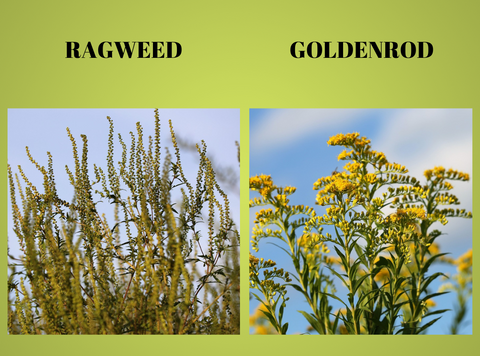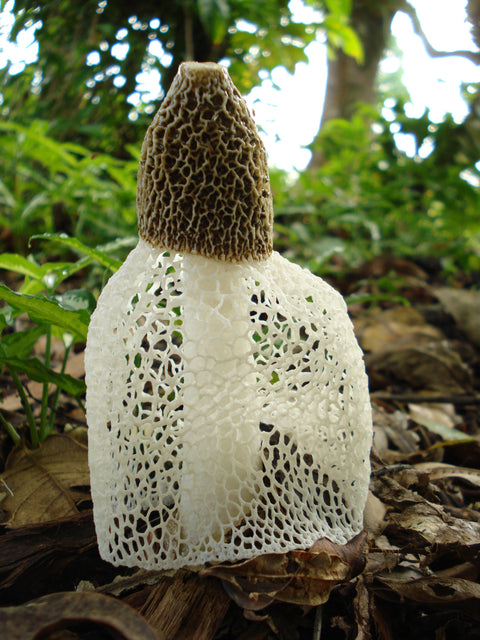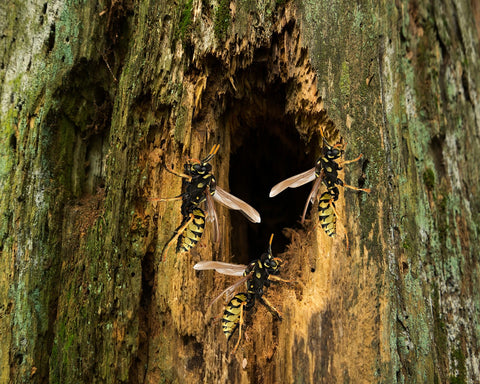As summer transitions into fall, the landscape undergoes a colorful transformation with the emergence of various wildflowers. Two of the most commonly observed plants during this season are ragweed and goldenrod. There are over 75 species of goldenrod (Solidago sp.) and 20 species of ragweed (Ambrosia sp.) that are native to the U.S. If you are prone to fall allergies with itchy eyes and a runny nose, the cause is usually ragweed, although goldenrod often gets the unfair blame. Both grow in ditches, fence rows, and open fields. They bloom at the same time and are members of the Asteraceae family, however, ragweed and goldenrod have many more differences than similarities. While they may look somewhat similar at first glance, they are quite distinct in their characteristics and properties.
Goldenrod is a beneficial pollinator plant! Goldenrod flowers have large, heavy pollen grains and nectar that is important for pollinators. The pollen is sticky and attaches to pollinator bodies as they feed. This is how goldenrod’s pollen grains are spread. Goldenrod produces a more golden, abundantly blooming stem compared to ragweed, so it is a more aesthetically pleasing native to add to landscape.
Ragweed flowers have smaller, lighter pollen grains. There is no nectar to feed pollinators. Instead of pollinators spreading the pollen, the light grains are easily blown in the wind for miles. A single ragweed plant can produce over a billion grains of pollen to create allergic suffering in humans!
Here are some attributes that will help you differentiate between ragweed and goldenrod, providing you with the knowledge to identify them with confidence.
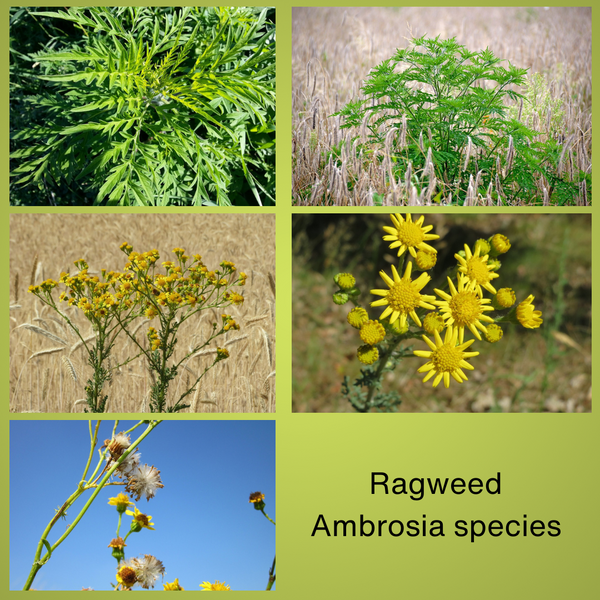
Ragweed:
Appearance:
- Ragweed typically grows as a tall, slender plant, reaching heights of 2 to 4 feet.
- Its leaves are deeply lobed, resembling fern fronds, and they are alternate along the stem.
- The stem is often hairy and slightly reddish in color.
Flower:
- Ragweed's inconspicuous flowers are tiny and greenish-yellow in color.
- These flowers are arranged in clusters at the top of the stem in a spike-like formation.
Allergenic Properties:
- Ragweed is notorious for causing hay fever and allergic reactions in many people.
- Its pollen is the primary culprit, released into the air in late summer and early fall.
Habitat:
- Ragweed is often found in disturbed areas, along roadsides, in fields, and even in urban settings.
- It thrives in areas with poor soil quality.
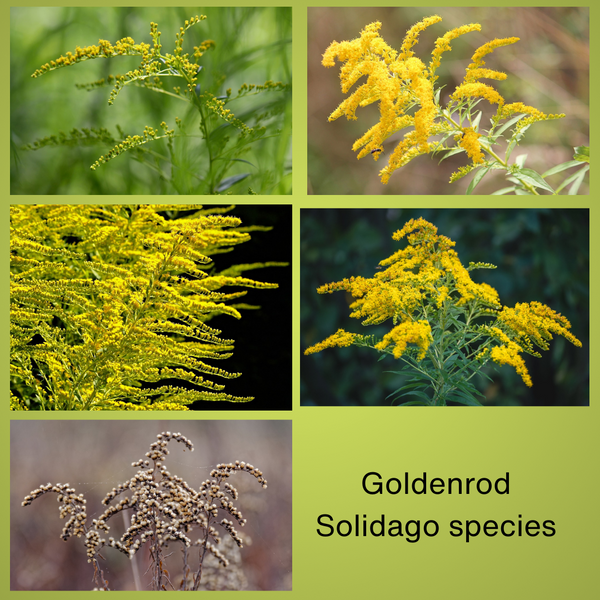
Goldenrod:
Appearance:
- Goldenrod stands at a similar height as ragweed, ranging from 2 to 4 feet tall.
- Its leaves are narrow and elongated, usually growing in a basal rosette with some leaves alternately arranged on the stem.
- The stem is typically smooth and green.
Flower:
- Goldenrod's bright yellow, showy flowers are its most distinctive feature.
- These flowers form dense clusters that can appear in various shapes, such as plumes or spikes.
Allergenic Properties:
- Contrary to popular belief, goldenrod is not a major allergen.
- Its pollen is heavy and is not carried by the wind, making it less likely to cause allergies.
Habitat:
- Goldenrod prefers open, sunny areas and is often found in meadows, fields, and along roadsides.
- It tends to grow in areas with better soil quality than ragweed.
In summary, while ragweed and goldenrod may share the same flowering season and similar heights, they differ significantly in appearance, allergenic properties, and habitat preferences. Ragweed is the culprit behind many fall allergies, with inconspicuous greenish-yellow flowers, while goldenrod is a showy, non-allergenic wildflower with bright yellow blooms. By familiarizing yourself with these differences, you can appreciate the beauty of goldenrod and add it to your landscape for fall color and pollinator support while taking precautions to avoid ragweed-induced allergies during the fall season.


